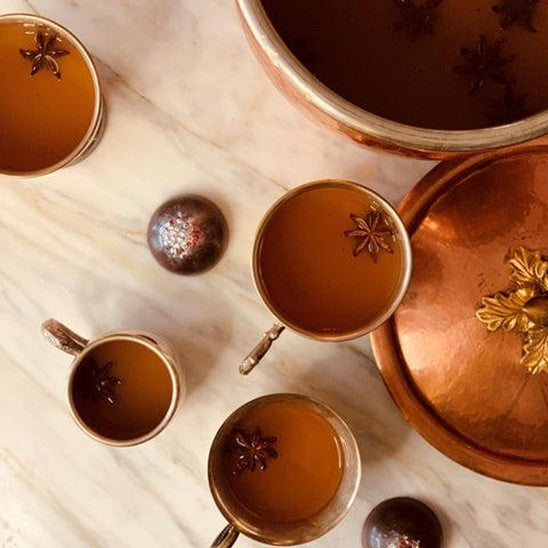Dr. William Li is a physician, scientist, and New York Times bestselling author whose work to find common denominators of health and disease has impacted more than 50 million lives. He is a world-renowned expert in angiogenesis, the process the body uses to grow its circulation, and the basis for a renaissance in biomedical research that has led to new treatments for cancer, diabetes, and vision loss. Dr. Li is also a collaborator of our new Pure Plant Collection.

Chocoholics across the globe have taken notice of the emerging health benefits of cacao.
The impressive bioactive profile of cacao has nutritionists everywhere reaching for their dark chocolate bark and raw cacao powder. But is all chocolate created equal? The answer is a resounding, no. Before we jump into the specific nutrient properties of the beloved snack, let us back up and look at it from the top.
Cacao vs. Cocoa: What is the Difference?
You have likely noticed that some chocolate products are either marketed as “cacao” or “cocoa.” Some foods are labeled as “cacao nibs” while others may say, “cocoa powder.” But what does the different terminology mean?
Chocolate is made from cacao beans, which are technically considered seeds. Full agreement does not exist on when exactly to use the different terms. Some say products utilizing the entire cacao pod should be deemed “cacao” and the pressed powder should garner the name “cocoa.” Others believe the raw versions should be labeled “cacao” while the roasted and more processed varieties should be called “cocoa.” In my opinion, the terminology should not matter nearly as much as the ingredient list and flavonoid levels. So long as unnecessary additives like sugar are not added to the product, both cacao and cocoa can be extraordinarily nutrient-dense.
Health Benefits of Cacao/Cocoa
Researchers at the University of California, Davis, determined that bioactives called procyanidins in cocoa have potent antiangiogenic effects through their ability to stop the signals activating blood vessel cells, which can lead to various diseases such as cancer, skin diseases, age-related blindness, diabetic ulcers, cardiovascular disease, stroke, and more.
Cacao has also been shown to improve stem cell function. At the University of California, San Francisco, researchers explored whether a chocolate drink made with cocoa containing high levels of flavanols could influence stem cells and blood vessel health. Participants who drank the high-flavanol beverage had twice as many stem cells in their circulation compared to the people who drank the low- flavanol cocoa, showing that the more flavanols contained in the product, the more stem cell benefits it boasts.
Cacao also positively impacts the gut microbiome. A study conducted by Louisiana State University researchers found that fiber in cacao feeds healthy gut bacteria such as Bifidobacteria and Lactobacilli. These beneficial bacteria generate compounds with anti-inflammatory properties that also improve glucose and lipid metabolism. Cacao may even help correct disruptions to the microbiome caused by chronic stress – not to say that every time you are feeling anxious you should emotionally eat chocolate.
Why Is Dark Chocolate the Healthy Option?
If most chocolate contains beneficial flavanols, then what makes dark chocolate the option of choice? Lighter versions of the sweet treat typically contain processed sugar and saturated fat, two ingredients that can have significant damaging effects on your overall health. But pure dark chocolate contains high amounts of cocoa solids, which deliver numerous health benefits. Dark chocolate also contains a greater percentage of cacao, less sugar, and little dairy.
As a rule of thumb, opt for dark chocolate that contains 70% or greater cacao, read the ingredient list to be sure there are no additives, and keep in mind that, typically, the darker the chocolate, the more nutrients it contains.
How to Up Your Cacao Intake
In my book Eat to Beat Disease, I note several ways to add more beneficial cacao to your daily routine. One of them is by consuming one pack of CocoaPro, which contains 375mg of flavonoids, per day. This especially helps to combat coronary artery disease. I also include recipes that incorporate nutrient-dense dark chocolate. One of my favorites is my Dark Chocolate Breakfast Bars:
Ingredients:
- ½ cup cashews, roughly chopped (can be omitted if nut allergies)
- 2 cups old-fashioned or quick-cooking oats
- ¼ teaspoon sea salt
- ¼ cup organic dried apricots, chopped
- ¼ cup organic dried cranberries
- ¼ cup organic dried blueberries
- ½ cup mini dark chocolate chips (70% or greater cacao) or chopped dark chocolate
- ½ cup whole dates (approximately 6-7 large), pitted and roughly chopped
- ¼ cup maple syrup
- ½ teaspoon vanilla extract
Directions:
In a large mixing bowl combine cashews, oats, and salt. Add the apricots, mango, cranberries, blueberries, and chocolate and mix well. To the bowl of a food processor add the dates, maple syrup, vanilla, and puree until smooth. If the mixture is too thick, add warm water one spoonful at a time until consistency resembles that of applesauce. Pour the date-maple puree over the oat and fruit mixture and mix thoroughly until all ingredients are coated.
Add the mixture to a parchment-lined 8- or 9-inch square baking pan and press firmly with your fingers. Place on the middle rack of the oven and bake for 15-20 minutes, until the edges just start to brown. Remove and cool completely on a cooling rack, and then place in the refrigerator to set, approximately 2-3 hours or overnight, before cutting into individual bars. Store covered in the refrigerator.

